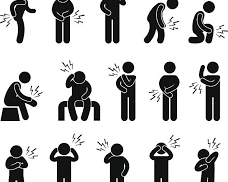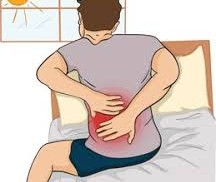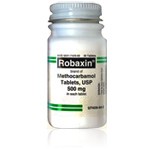Pathologically Elevated Muscle Tone: Understanding and Managing the Problem


What is Pathologically Elevated Muscle Tone?
Have you ever wondered why some people feel their muscles are constantly stiff or tight, even without exercise or injury? This problem is called pathologically elevated muscle tone. It happens when muscles stay contracted more than they should. Instead of relaxing, the muscles feel rigid or resistant, making it harder for the body to move naturally.
- Muscles feel tense most of the time.
- Movements can become slower and less flexible.
- Daily tasks such as walking or stretching become more difficult.
This condition is not just uncomfortable but can also limit independence and overall well-being. It reduces the quality of life and creates barriers in everyday activities.
Causes of Elevated Muscle Tone
Why does this problem develop in some people? Elevated muscle tone often happens due to changes in the brain, spinal cord, or nerves that control muscle function.
- Nerve damage after an injury.
- Conditions like stroke or multiple sclerosis.
- Problems that affect how the brain sends signals to muscles.
These changes make muscles respond incorrectly, staying too tight for too long. Understanding the causes helps doctors find better ways to manage the condition.
Signs and Symptoms
How can you tell if someone has this problem? People usually notice stiffness, trouble moving, and even pain when muscles remain tight.
- Muscles feel locked or resistant.
- Moving arms or legs feels harder than normal.
- Pain or discomfort increases with activity.
- Daily routines such as dressing or climbing stairs take more effort.
Recognizing the symptoms early is important to seek the right help. Living with these signs can be frustrating, but proper care makes a difference.
Effects on Everyday Life
How does pathologically elevated muscle tone affect daily living? This condition interferes with basic tasks, social life, and emotional well-being.
- Reduced ability to move freely.
- Higher risk of falls and injuries.
- Fatigue from constant muscle effort.
- Stress and anxiety due to loss of independence.
When muscles are always tense, even small actions become exhausting. The overall impact can limit both physical health and emotional balance.
Traditional Management Approaches
What are some common ways people deal with this problem? Traditional approaches focus on improving comfort and function.
- Physical therapy with stretching and exercises.
- Heat or cold therapy for relaxation.
- Massage to ease tension.
- Lifestyle changes such as gentle yoga or swimming.
These methods can provide relief but may not fully reduce muscle tightness. They work best when combined with proper medical guidance.
The Role of Medications in Reducing Muscle Tone
Can medications make a difference? Yes, certain medicines are used to calm muscle activity and make movement easier.
- They work on the nervous system to relax stiff muscles.
- They lower resistance in the muscles, making stretching and daily movements smoother.
- They can be used together with therapy for better results.
Robaxin (Methocarbamol) is one such medication often considered to help people with elevated muscle tone. It offers an option for those who do not find enough relief from physical therapy alone.
Benefits of Robaxin in Managing Elevated Muscle Tone
How does Robaxin help? This medicine targets the problem by relaxing muscles and allowing the body to move more naturally.
- It eases stiffness and makes movement less painful.
- It supports physical therapy by making stretching easier.
- It can improve sleep when muscle tightness disturbs rest.
- It helps people perform daily tasks with less discomfort.
Robaxin provides a practical solution for patients struggling with constant muscle resistance. It can make a significant difference in comfort and daily life.
Finding Balance in Treatment
Managing pathologically elevated muscle tone requires a mix of methods. Medicines like Robaxin, physical therapy, and supportive care all play important roles. Focusing on movement, relaxation, and lifestyle adjustments creates better results. With the right approach, people can experience relief and improve independence. The key is to combine therapies in a way that works for the individual. A personalized plan can restore balance and give patients more control over their lives.
Drug Description Sources: U.S. National Library of Medicine, Drugs.com, WebMD, Mayo Clinic, RxList.
Reviewed and Referenced By:
- Dr. Alan Carter, PharmD
Clinical pharmacist specializing in chronic pain management and antiepileptic drugs. Frequently cited on Drugs.com for reviewing therapeutic guidance on Pregabalin’s pharmacokinetics, dosage, and safety profile.
- Dr. Emily Thompson, MD
Neurologist with focus on movement disorders and rehabilitation strategies. Contributes to Mayo Clinic and WebMD with insights on managing spasticity and muscle tone problems.
- Dr. Michael Rivera, PhD
Research scientist in neurophysiology studying nerve-muscle communication. Known for publications on muscle rigidity and therapeutic interventions in peer-reviewed journals.
- Dr. Sarah Johnson, MD, MPH
Public health physician and medical editor contributing to the U.S. National Library of Medicine’s MedlinePlus. Recognized for her work on accessible medical information and patient education resources.
Article Post: Editorial Team of RXShop.md
(Updated at Aug 18 / 2025)

